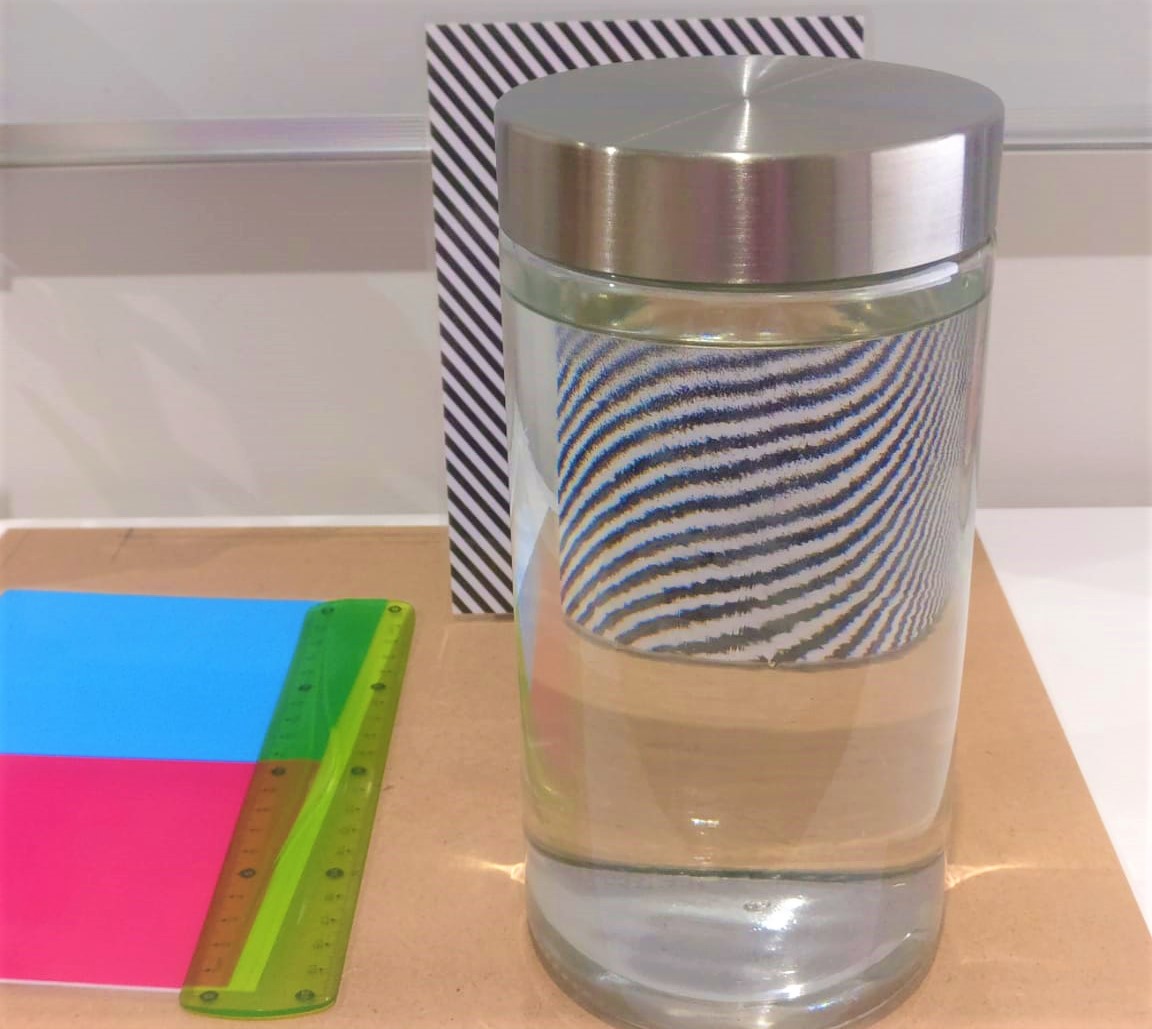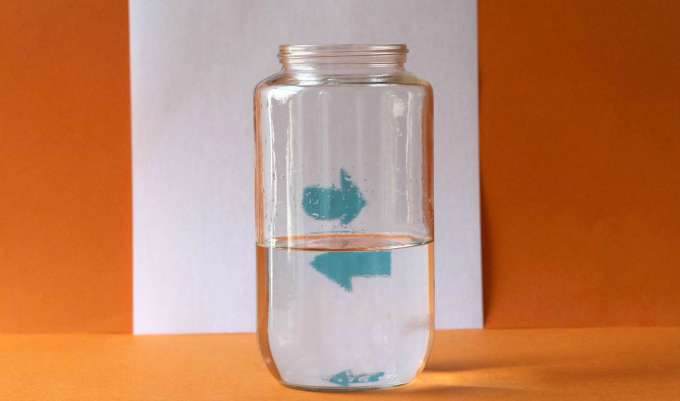
Water Lens
This water refraction science experiment is simple and straightforward to set up.
When a glass of water is placed in front of horizontal arrows, it appears that the arrows have reversed direction. Refraction is to blame for this phenomenon. When light flows through one transparent (clear) object into another, such as air through glass and water, refraction occurs.
Components:
- A glass of water
- Cards with drawings
Working Principle:
It appears like the arrow has reversed itself when it is moved to a specific distance behind the glass.

Light can bend or refract as it travels from one material to another. Before striking the arrow, light goes from the air, through the glass, through the water, through the rear of the glass, and back through the air. Light refracts whenever it moves from one medium or material to another.
The fact that light bends as it passes through various materials does not explain why the arrow reverses. Consider the glass of water as a magnifying glass to better understand this. Light bends toward the centre when it passes through a magnifying glass. The focal point is where all of the light comes together, but beyond it, the image appears to reverse because the light rays that were bent pass each other. So the light that was on the right side is now on the left, and the light that was on the left side is now on the right, making the arrow appear to be reversed. This is better illustrated in the following diagram.

We can see both arrows pointing left to right without the bottle of water. Light may be seen spreading out from the tip of the arrow in straight lines known as rays. Because some of the rays reach your eyes, your brain can see where the arrow’s tip is.
However, instead of spreading out in straight lines when we add our glass of water, the light changes direction as it enters and exits the glass of water. Refraction is the term for this change in direction.
Instructions:
- Pour some water into the glass.
- Place the message card behind the glass of water and slowly pull it out. From the front, look through the glass and look for the arrow. What happens?
- What difference does it make how close the water is to the paper?
- Is it important whether the jar is square or round? What about its size?
Links:
Cool Science Experiment! – Make a Water Lens – Reverse an Image with Water
Amazing Water Trick – Amazing Science Tricks Using Liquid
Episode 4: Reversing Arrow | Institute of Physics
Turning Arrow (Refraction Experiment) – Fun Science UK
Magic Happens When You Pour Water Into A Jar